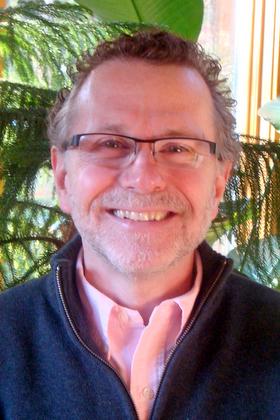
Dr. John Martin, medical professor, Sophie Davis School of Biomedical Education
Sophie Davis Professor John Martin and colleagues use genetically altered mice to demonstrate role of corticospinal tract
Extraordinarily complex networks of circuits that transmit signals from the brain to the spinal cord control voluntary movements. Researchers have been challenged to identify the controlling circuits, but they lacked the tools needed to dissect, at the neural level, the way the brain produces voluntary movements.
Recently, Dr. John Martin, medical professor in City College’s Sophie Davis School of Biomedical Education, postdoctoral fellow Dr. Najet Serradi and other colleagues employed a sensitive genetic technique that eliminated a particular gene in the cerebral cortex and, in the process, changed the circuitry.
The team hypothesized that the corticospinal tract, which stretches from cerebral cortex to the spinal cord, is important for voluntary reaching movements, but not for more routine and stereotypic walking movements. “We reasoned that if we genetically altered the corticospinal tract we would affect voluntary reaching movements, but not walking.” Professor Martin said.
In genetically intact mice, corticospinal tract signals are transmitted from one side of the cerebral cortex to the opposite side of the spinal cord. Such mice reach with one arm, or the other – but not both arms together.
Professor Martin and colleagues used specially bred mice, i.e. knockout mice, with the gene EphA4 removed from the cerebral cortex. These mice reached with both forelimbs together, rather than with one. This happened because the genetic manipulation changed the circuit; it caused the signal to move to be transmitted from one side of the cerebral cortex to both sides of the spinal cord.
However, their stereotypic walking was unaffected. Professor Martin said this shows that while voluntary movements depend on the corticospinal tract walking depends on circuits in other parts of the brain and spinal cord, which are not affected by the gene manipulation.
The findings, he added, “etch away at the vexing problem of achieving a deeper understanding of how the brain functions in voluntary movement.” In addition greater knowledge of how voluntary circuits function could lead to new understanding of cerebral palsy, a condition in which the corticospinal tract is injured around the time of birth and people often make “mirror movements” of both arms when they intend to move only one, he said.
The research, which is funded by the National Institute of Neurological Diseases and Stroke, aims to understand the brain and spinal cord circuits for voluntary movement. Using similar genetic tools, his team hopes to further dissect the connections and functions of the corticospinal tract movement circuits in ways to restore movements after brain or spinal cord injury.
The findings were published April 9 in the “Journal of Neuroscience.”
About The City College of New York
Since 1847, The City College of New York has provided low-cost, high-quality education for New Yorkers in a wide variety of disciplines. More than 16,000 students pursue undergraduate and graduate degrees in: the College of Liberal Arts and Sciences; the Bernard and Anne Spitzer School of Architecture; the School of Education; the Grove School of Engineering; the Sophie Davis School of Biomedical Education, and the Colin Powell School for Civic and Global Leadership. U.S. News, Princeton Review and Forbes all rank City College among the best colleges and universities in the United States.
About The Sophie Davis School of Biomedical Education
Since 1973, the Sophie Davis School of Biomedical Education has offered a unique, seven-year BS/MD program that integrates an undergraduate education with the first two years of medical school. After five years, students transfer seamlessly to a cooperating medical school for the final two years. In addition, Sophie Davis offers a physician assistant program in partnership with Harlem Hospital Center that leads to a BS degree. The PA program began in 1970 and the affiliation with CCNY and Sophie Davis began in 1978. The school's mission is to increase accessibility to careers in medicine for underrepresented groups and to train primary care health care professionals to serve in medically underserved communities. Around 46 percent of its approximately 460 PA and BS/MD students are African-American or Hispanic.
MEDIA CONTACT
Ellis Simon
p: 212.650.6460
e:
esimon@ccny.cuny.edu